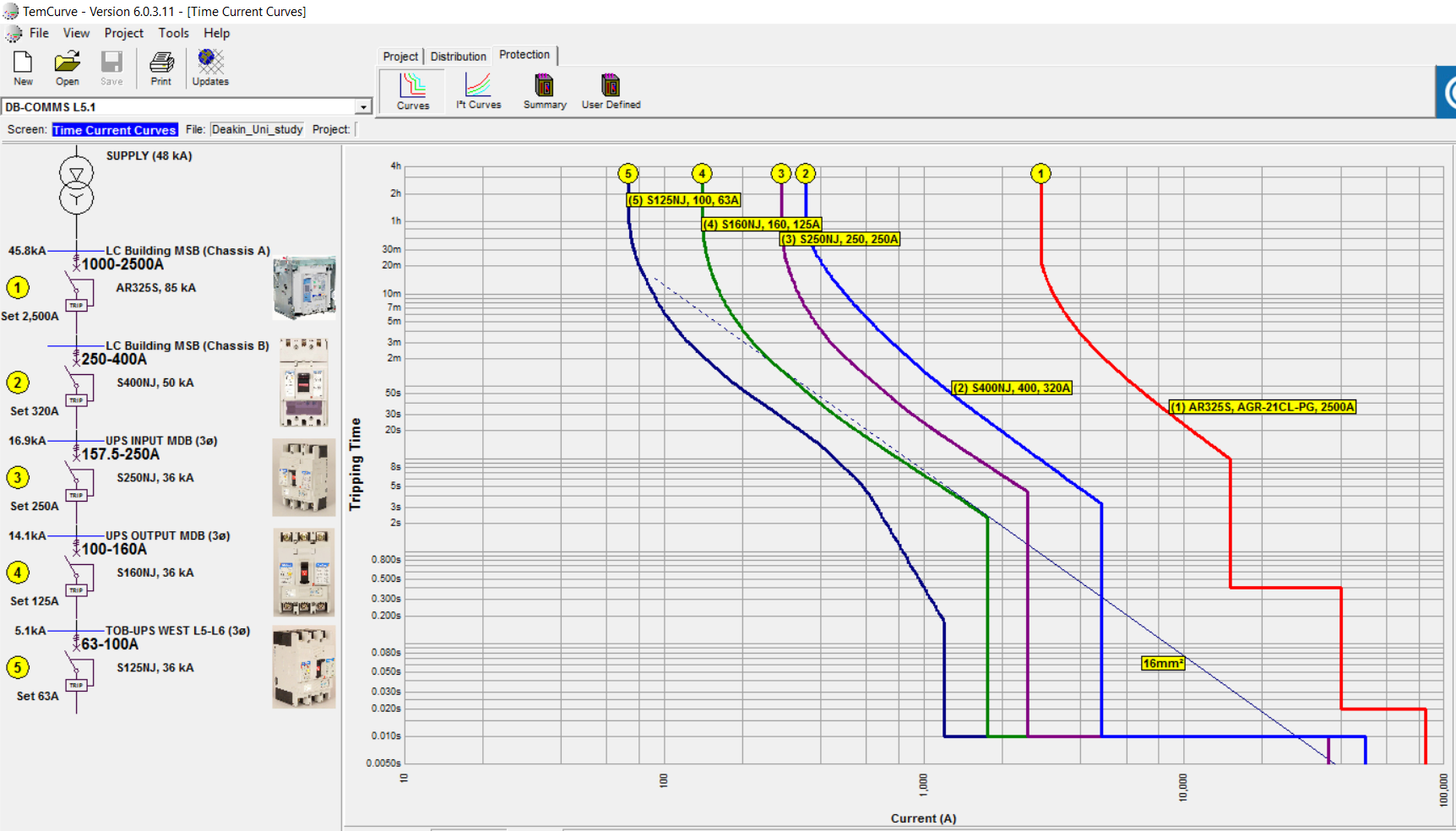Undertaking a coordination study to ensure discrimination is achieved in any electrical system requiring compliance sign off is now mandatory under AS/NZS 3000:2018 (late 2019 New Zealand).
Discrimination (selectivity) ensures reliability of supply through the coordination of two or more devices to ensure the device closest to the fault will trip. When discrimination is achieved, only the circuits exposed to a fault are cleared, and supply is retained on other critical loads.
Adjustable circuit breakers have two common types of trip units: thermal magnetic and electronic. By using a graphical representation, it is possible to calculate how quickly the SCPD will trip when subjected to a particular current and how this will change depending on the settings of the breaker.
Discrimination is commonly determined using a time current selectivity analysis by plotting the manufacturer’s time current characteristic curves of the upstream and downstream devices and making changes to the settings of a breaker to see how it performs under fault conditions and to ensure curves do not overlap.
When the selectivity data of circuit breakers in a series is not available from the manufacturer, discrimination can also be determined by identifying when the let through energy of the downstream devices is less than the energy required to unlatch the upstream device.
AS/NZS 3000:2018 requires consideration of both discrimination and cascading (backup) protection.
Cascading is the use of one protective device to back up another protective device to interrupt a fault current so both devices continue with circuit protection (current limiting) operation. Cascading is an economical solution that allows the use of devices with a fault rating lower than the installed prospective fault levels and can provide cost and space savings.
NHP’s TemCurve 6 Selectivity Analysis Software allows the user to model combinations of circuit breakers to achieve selectivity. It is fully featured and extremely easy to use software including fault level calculations based on AS 3008 and AS 3000 cable data and product technical data.
To get the most out of the software, NHP recommends attending a TemCurve 6 training course, which are held periodically at NHP training centres throughout Australia and New Zealand. The course is free of charge.
To ensure reliability of supply and stay compliant with the wiring rules, find out more about coordination studies and TemCurve6 Selectivity Analysis Software by contacting your local NHP representative or call 1300 NHP NHP.

